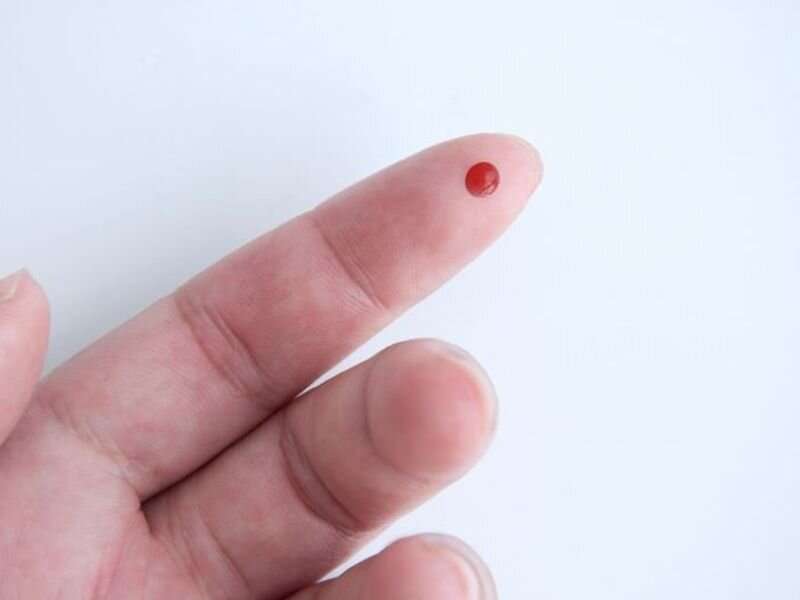Blood
Finger prick, venous blood can ID key Alzheimer disease biomarkers
Finger prick or venous blood collection can identify key Alzheimer disease-related biomarkers, according to a study presented at the annual Alzheimer’s Association International Conference, held from July 16 to 20 in Amsterdam.
Hanna Huber, Ph.D., from the University of Gothenburg in Sweden, and colleagues collected capillary dry blood spot (DBS[capillary]) and venous dry blood spot (DBS[venous]) as well as ethylenediamine tetraacetic acid (EDTA) plasma and neuropsychological measures from 43 memory clinic participants. Neurofilament light (NfL), glial fibrillary acidic protein (GFAP), and phosphorylated tau (p-tau) were measured by single molecular array.
The researchers found that DBS(capillary) GFAP and NfL levels were associated with their counterparts in EDTA plasma. Significant associations were also seen for DBS(venous) GFAP, NfL, and p-tau181 with EDTA plasma levels. DBS(capillary) and DBS(venous) were associated with amyloid status; DBS(venous) NfL and p-tau181 were associated with Mini-Mental State Examination (MMSE), Clinical Dementia Rating (CDR), and amyloid.
In a second study, Huber and colleagues obtained DBS(capillary), DBS(venous), and EDTA plasma, and neuropsychological measures for 77 memory clinic participants. The researchers observed significant associations for DBS(capillary) GFAP and NfL with their counterparts in EDTA plasma. DBS(capillary) p-tau217, but not DBS(capillary) p-tau181, were associated with the same measures in EDTA plasma.
DBS(venous) GFAP, NfL, p-tau217, and p-tau181 were also associated with their counterparts in EDTA plasma. DBS(capillary) GFAP and DBS(venous) GFAP, NfL, and p-tau181 were found to be associated with MMSE, CDR, and amyloid status.
“A method that allows blood collection at home and that is simple enough to be performed independently, or by caregivers, would increase accessibility of these tests,” Huber said in a statement. “It would result in improved early diagnosis and better monitoring of patients considered ‘at risk’ or those who are receiving approved therapies.”
More information:
Press Release
More Information
Copyright © 2023 HealthDay. All rights reserved.
Citation:
Finger prick, venous blood can ID key Alzheimer disease biomarkers (2023, July 20)
retrieved 20 July 2023
from https://medicalxpress.com/news/2023-07-finger-venous-blood-id-key.html
This document is subject to copyright. Apart from any fair dealing for the purpose of private study or research, no
part may be reproduced without the written permission. The content is provided for information purposes only.

